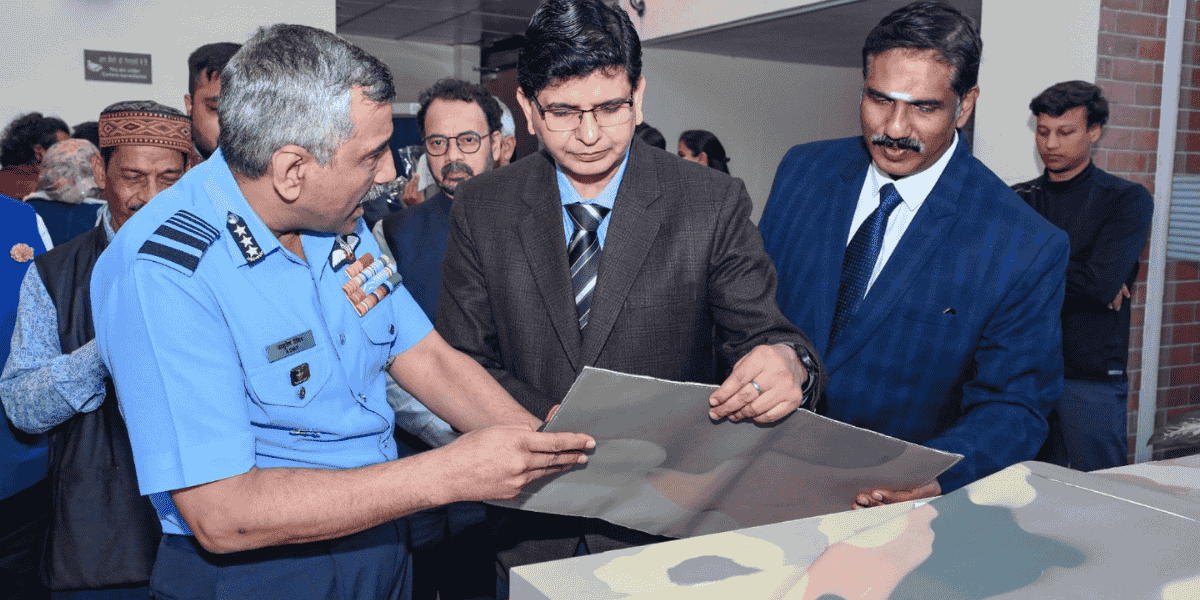IIT Kanpur has recently initiated a groundbreaking venture known as the Anālakṣhya Project, which aims to advance metamaterial surface cloaking technology. This ambitious project promises to significantly enhance the strategic capabilities of the Indian defense sector by developing technologies that aim to protect key military equipment from being detected by radar and other surveillance methods.
The focus of the Anālakṣhya Project is on creating cloaking systems that can render military assets invisible or at least greatly reduce their detectability. Researchers at IIT Kanpur are employing metamaterials—specialized materials engineered to possess properties not found in natural substances—to manipulate electromagnetic waves. This innovative approach is expected to revolutionize defense applications and position India at the forefront of the next-generation defense systems landscape.
At the core of the Anālakṣhya Project is the Metamaterial Surface Cloaking System (MSCS). This advanced technology utilizes metamaterials specifically designed to manipulate electromagnetic waves, particularly radar signals. Traditionally, radars function by emitting radio waves that bounce off objects; however, the technologies developed under Anālakṣhya promise to absorb or deflect these waves, significantly minimizing an object’s radar cross-section (RCS). This capability is vital for making fighter jets, naval ships, drones, and military installations undetectable to radar-guided systems, thereby enhancing their survival chances in high-risk environments.
The key features of the Anālakṣhya system include its ability to absorb radar waves effectively, minimizing radar reflections and reducing the probability of detection. The system boasts adaptive cloaking, which allows for dynamic adjustments to various radar frequencies, ensuring comprehensive stealth across different operational scenarios. Its lightweight and scalable design ensures compatibility with a wide range of platforms, including land, sea, and aerial assets.
The implications of this technology are substantial for India’s defense capabilities. Anālakṣhya is likely to facilitate stealth operations that can enable discreet deployment of high-value military assets. Fighter jets equipped with this system could conduct missions deep within enemy territories without being detected—a strategic advantage that could alter the dynamics of modern warfare. Similarly, naval vessels operating in open waters would greatly benefit from reduced detectability, thereby fortifying India’s maritime defense stance.
Furthermore, the integration of Anālakṣhya into India’s defense arsenal will enhance asymmetric warfare capabilities, improve missile defense effectiveness against radar-guided threats, and enable surprise tactical maneuvers. As military assets equipped with the Anālakṣhya system operate deeper into contested regions, the reduced likelihood of early detection could provide India with a significant edge during confrontations.
The project also highlights India’s commitment to self-reliance in defense technology, aligned with the Atmanirbhar Bharat initiative. By developing indigenous stealth solutions, India can reduce its reliance on foreign imports while simultaneously bolstering its domestic defense industry. As the technology reaches maturity, it may even position India as a potential exporter of advanced stealth technologies, making it an attractive partner for other nations looking for cost-effective, radar-evading solutions.
However, the path forward is not without challenges. Adapting Anālakṣhya for various military platforms will require overcoming substantial engineering and logistical hurdles. The focus will be on seamless integration and maintaining operational efficiency across diverse applications. Moreover, advancements in counter-radar detection systems mean that continuous research and development will be necessary to stay ahead of evolving threats.
Looking ahead, the synergy between the Anālakṣhya technology and artificial intelligence-driven systems could further enhance its effectiveness. Real-time adjustments to stealth parameters based on dynamic battlefield conditions could make India’s military platforms significantly more adaptive and autonomous.
In conclusion, the Anālakṣhya Project marks a significant milestone for India, demonstrating the nation’s ability to develop cutting-edge defense technologies. By improving stealth capabilities and mitigating vulnerabilities of critical military assets, this initiative not only bolsters national security but also elevates India’s profile within the global defense community. As this technology continues to evolve, it promises to be a cornerstone of India’s future military strategies, reinforcing its role as a defense innovator and a strategic player on the world stage.













